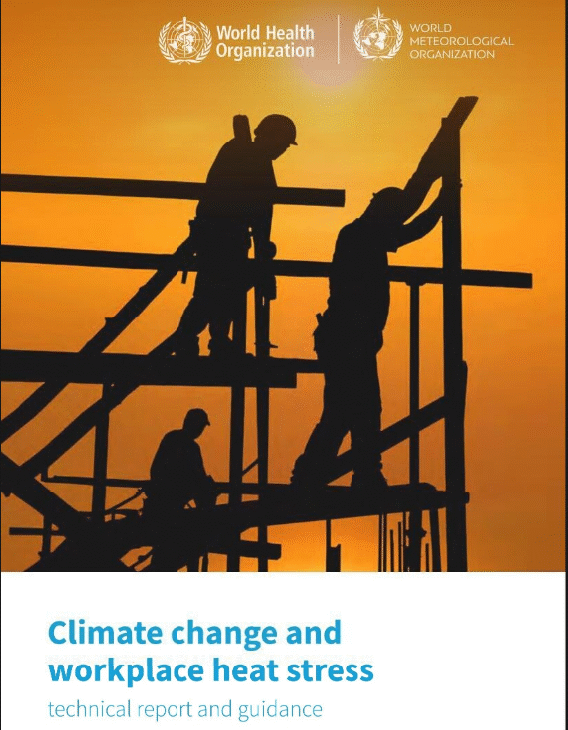As climate change drives more frequent and intense heatwaves, millions of workers are increasingly exposed to dangerous heat stress that threatens their health and productivity.
A new joint report by the World Health Organization (WHO) and the World Meteorological Organization (WMO) highlights the growing risks of heat stress in sectors such as agriculture, construction, and fisheries.
The report, Climate Change and Workplace Heat Stress, draws on five decades of research and warns that rising temperatures are severely undermining both the well-being and economic security of workers.
The WMO also confirmed that 2024 was the hottest year on record, with daytime temperatures above 40°C, and in some cases exceeding 50°C, becoming alarmingly common.
“Heat stress is already harming the health and livelihoods of billions of workers, especially in the most vulnerable communities,” said Dr. Jeremy Farrar, WHO Assistant Director-General for Health Promotion, Disease Prevention and Care.
He noted that the new guidance provides evidence-based solutions to protect lives, reduce inequality, and build resilient workforces in a warming world.
The findings reveal that extreme heat reduces worker productivity by 2–3% for every degree above 20°C. Prolonged exposure leads to serious health risks, including heatstroke, dehydration, kidney dysfunction, and neurological disorders.
Globally, about half the population now experiences the adverse impacts of high temperatures, and extreme heat events are sharply increasing in frequency and intensity.
WMO Deputy Secretary-General Ko Barrett stressed that occupational heat stress is no longer a challenge confined to countries near the equator, citing recent European heatwaves. “Protecting workers from extreme heat stress is not just a health imperative but an economic necessity,” Barrett said.
The report also complements findings by the International Labour Organization (ILO), which estimates that more than 2.4 billion workers face excessive heat exposure globally, leading to over 22.8 million occupational injuries every year.
Joaquim Pintado Nunes, ILO’s Chief of Occupational Safety and Health, called the guidance a milestone in the global response to workplace heat risks, urging urgent coordinated action to safeguard workers’ health, safety, and dignity.
Recommended Actions
The WHO–WMO guidance calls on governments, employers, and health authorities to adopt the following measures:
- Develop occupational heat-health policies tailored to local weather, job types, and worker vulnerabilities.
- Prioritize protection for vulnerable groups, including older workers, those with chronic health conditions, and individuals with lower physical fitness.
- Raise awareness among health professionals, employers, and workers to better recognize and treat heat stress symptoms.
- Engage trade unions, local authorities, and health experts in co-designing practical, locally relevant strategies.
- Promote affordable, scalable, and environmentally sustainable solutions.
- Invest in innovative technologies that help safeguard health while maintaining productivity.
- Support further research to strengthen occupational heat-health protections.
The guidance underscores that protecting workers from extreme heat is essential not only for health and safety but also for achieving global development goals, including poverty reduction and sustainable economic growth.
With climate change accelerating, urgent action is needed to protect lives, livelihoods, and economies from the escalating threat of heat stress.



